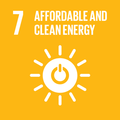“LEAF to Home” is a backup power supply system that can transmit the electricity stored in the batteries of Nissan LEAF cars to a residential home.
The “LEAF to Home” power supply system can supply electricity from Nissan LEAF electric vehicle onboard batteries to a home when used with Nichicon’s “EV Power Station” unit. Electricity is delivered from the LEAF’s battery pack via a rapid charging connector and Power Control System connected to the home’s distribution board.
The system has enough output to allow all household electronics to function at once, even during morning and evening consumption peaks. The LEAF’s lithium-ion batteries can store up to 24 kWh of electricity, sufficient to supply an average Japanese household for about two days.
The technology is now expanding to work with the grid too, helping to supply power back to the grid during peak demand. This type of demand-side response will be important for integrating variable renewable energy inputs into the grid.
Why you should care
In Japan, the tsunami and Fukushima nuclear disaster has increased demand for renewable energy and distributed storage solutions. Private homeowners have come to recognize the need for flexibility, and the government is taking steps to encourage adaptation of new, clean technologies technologies, rather than diesel backup generators. Integrating electric vehicles (EVs) into the grid can also help to accelerate the development of smart electricity grids.ds.
How the Global Goals are addressed

Good Health and Well-Being
Powering basic facilities like water pumping and communications during power outages could save lives during natural disasters that cut power.

Affordable and Clean Energy
EVs run on cleaner energy than petrol or diesel fuelled cars, and this will only increase as renewables grow. It is also more sustainable to use EVs as power stores than investing in domestic backup generators.

Sustainable Cities and Communities
Cities that can incorporate EV’s as a dynamic, responsive part of the electricity grid can be less reliant on dirty backup generators during times of peak demand and during power outages.

Climate Action
Switching to EVs and reducing reliance on backup generators during peak demand hours will both help to reduce the levels of greenhouse gas emissions.


